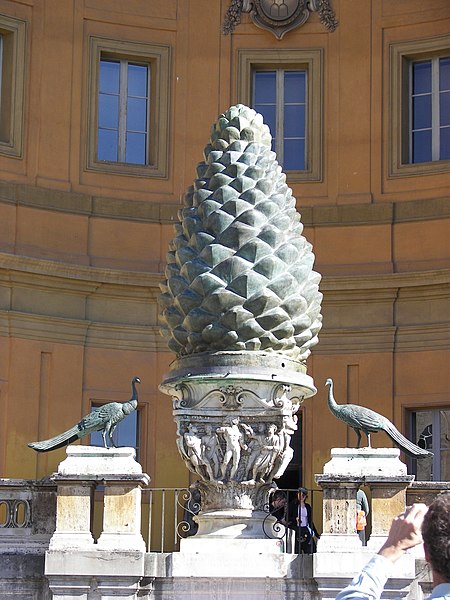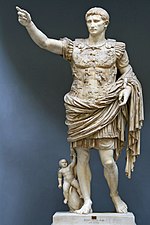Fontana della Pigna
Ancient Roman buildings and structures in ItalyBirds in artConifersFountains in Rome

The Fontana della Pigna or simply Pigna ([ˈpiɲɲa], "pinecone") is a former Roman fountain which now decorates a vast niche in the wall of the Vatican facing the Cortile della Pigna, located in Vatican City, in Rome, Italy.
Excerpt from the Wikipedia article Fontana della Pigna (License: CC BY-SA 3.0, Authors, Images).Fontana della Pigna
Rampa dell'Archeologia,
Geographical coordinates (GPS) Address Nearby Places Show on map
Geographical coordinates (GPS)
| Latitude | Longitude |
|---|---|
| N 41.906388888889 ° | E 12.454444444444 ° |
Address
Musei Vaticani
Rampa dell'Archeologia
00120 , Vatican City
Vatican City
Open on Google Maps










